Plaza de España
The Plaza de España in Seville is the masterpiece of the architect Aníbal González and his regionalist style. He was in charge of designing the main buildings that made up the Ibero-American Exposition of 1929. An event that elevated Seville, despite the difficulties, and left a unique legacy in the city. The Plaza de España in Seville was built between 1914 and 1929. It was intended as the main architectural complex of the Exhibition. Without a doubt, this is one of the most impressive squares in all of Spain.
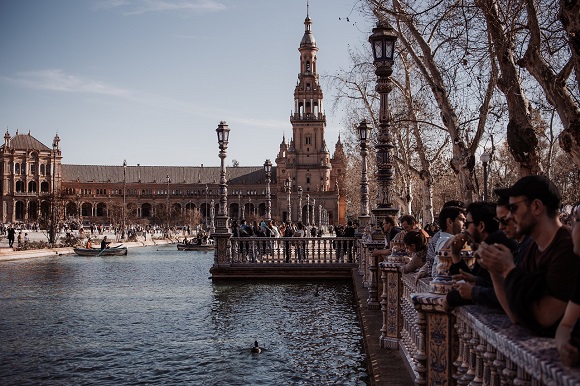
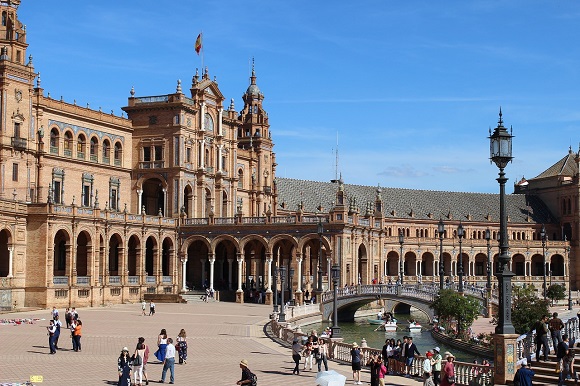
The symbolism of the Plaza de España in Seville is also evident in its architecture. The set has a semi-elliptical shape to emulate a hug. It is the embrace of Spain to its formerly conquered American territories. It is also a way of welcoming everyone who steps on it, in a friendly way. Of the 50,000 square meters occupied by the Plaza de España in Seville, 31,000 are free space.
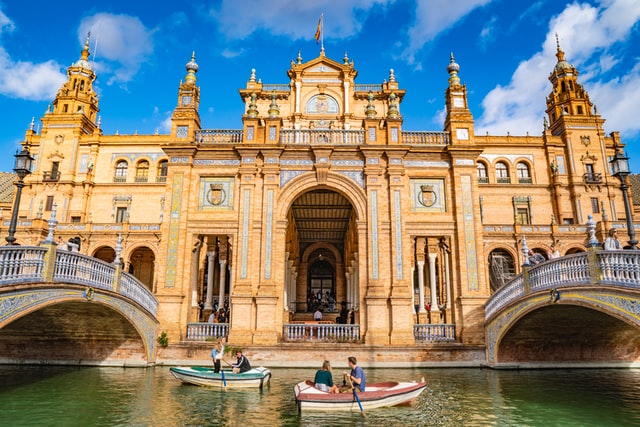

The remaining 19,000 are built. Specifically, there is a central building, two curved wings, and two towers at the ends. The two wings are galleries with coffered ceilings, arches, and columns. They join the central building with the two 74-meter-high towers. In their day, these towers were a source of conflict because they rivaled the Giralda in height.
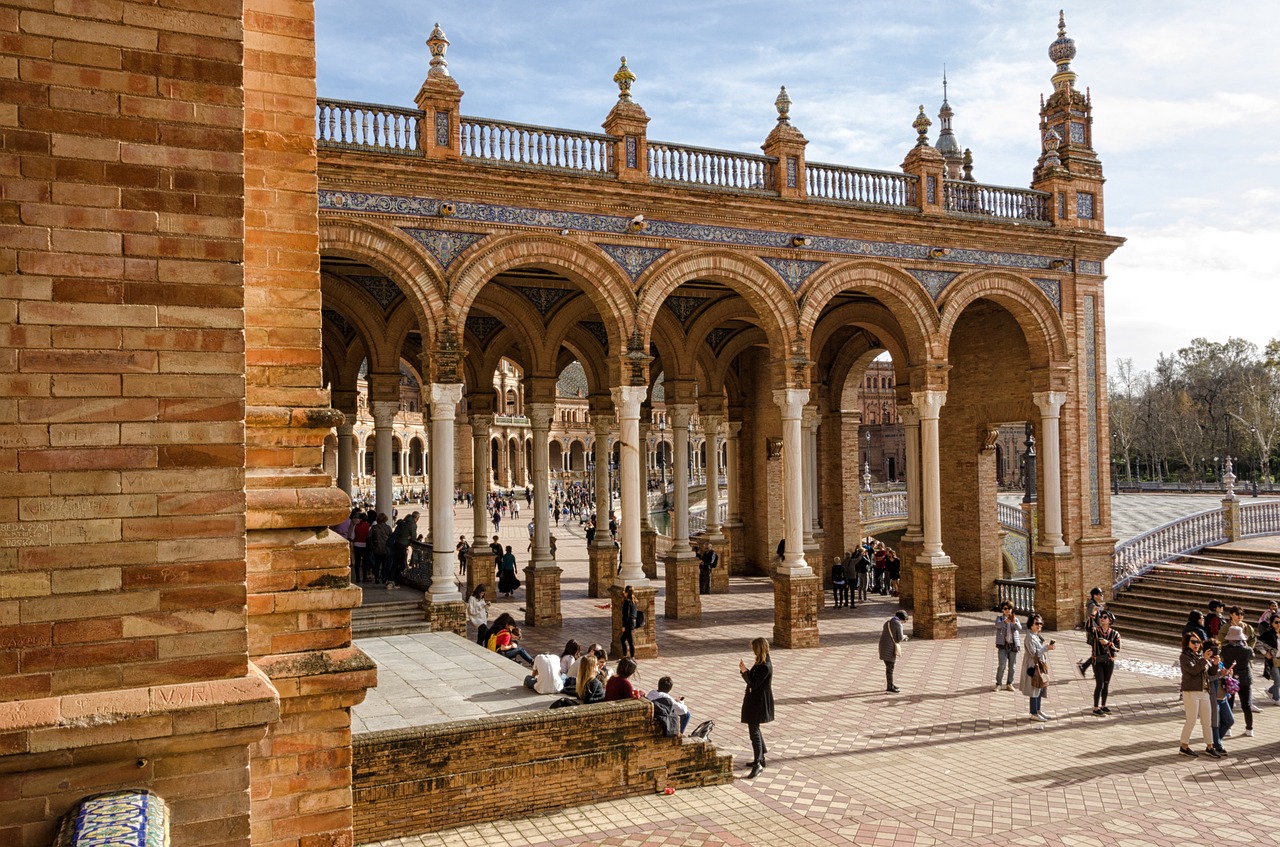

The construction of the Plaza de España in Seville is made with exposed brick, ceramic, wrought iron, and marble. They are the typical materials of Andalusian regionalist architecture. In addition, the complex includes an estuary or channel that can be crossed by four bridges. These four bridges represent the 4 ancient kingdoms of Spain: León, Castilla, Aragón, and Navarra. A central fountain is also added, the work of Vicente Traver. He was Aníbal González’s successor in directing the work from 1926. It was then that Traver decided to bring his personal touch to González’s work.
There are several curiosities throughout this monument. There are a total of 48 banks representing the 46 peninsular provinces of Spain, plus the Canary Islands and the Balearic Islands. Each one has its coat of arms, its map, and images of historical events represented on a cloth of Pisan tiles.
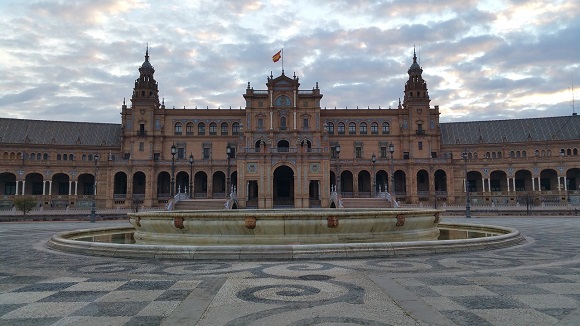
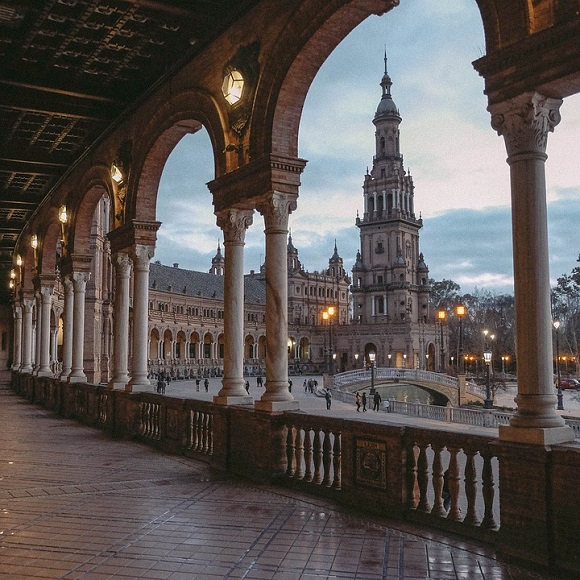
The province of Seville does not have a bank. But it is represented in four other murals located in different parts of the square. Throughout its entire building, we can see illustrious characters from Spanish history. There are different carved busts in relief located between the arches of the square. They represent figures such as Cristóbal Colón, El Cid, Carlos V, Goya, El Greco, Velázquez, Quevedo, Murillo, Zurbarán, Cervantes, Fortuny, etc.
As one of the landmarks of Seville, Plaza de España is in the sights of many tourists. But what few know is that this square is oriented towards the Guadalquivir, the road to the Americas. It is another of the symbols that Aníbal González wanted to represent as a tribute in the Exhibition of 29. Precisely in honor of its creator, in 2011 a bronze statue of Aníbal González was placed in front of the Plaza de España in Seville.
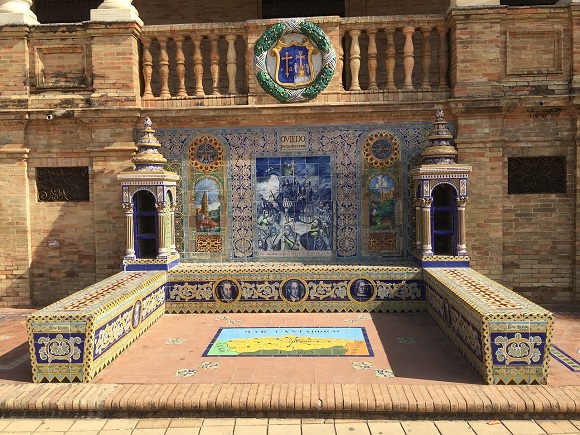
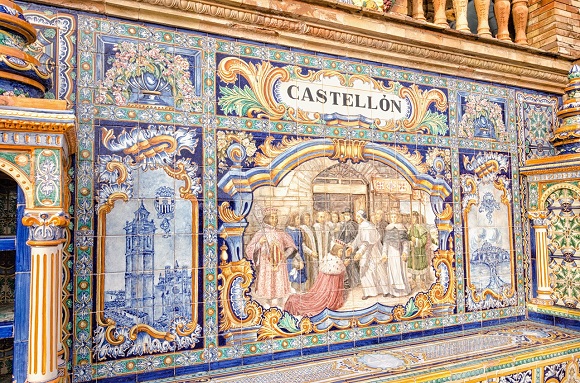
One of the leading elements of the Plaza de España in Seville is Rowing or motor boats that move daily through the canal or estuary that divides the square. A channel that stretches for 515 meters in length and from which you can see the Plaza de España in Seville from another perspective.

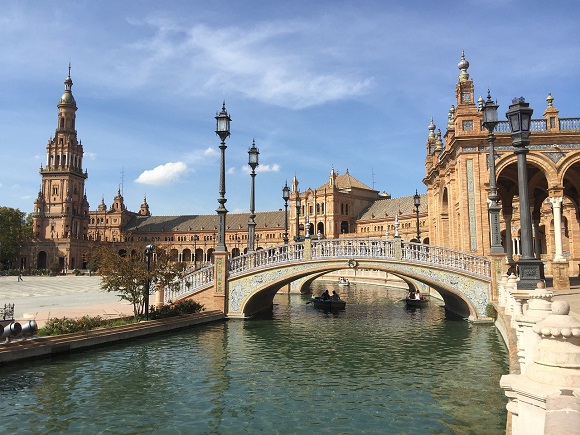
This is only possible by doing it from one of the boats that can be rented at the entrance of the square. Without a doubt, it is one of the most bucolic and, why not, romantic experiences that can be lived in one of the most prestigious places of interest in Seville. The description is a translation of La Plaza de España de Sevilla, un abrazo al Mundo by sevilla.abc.es

